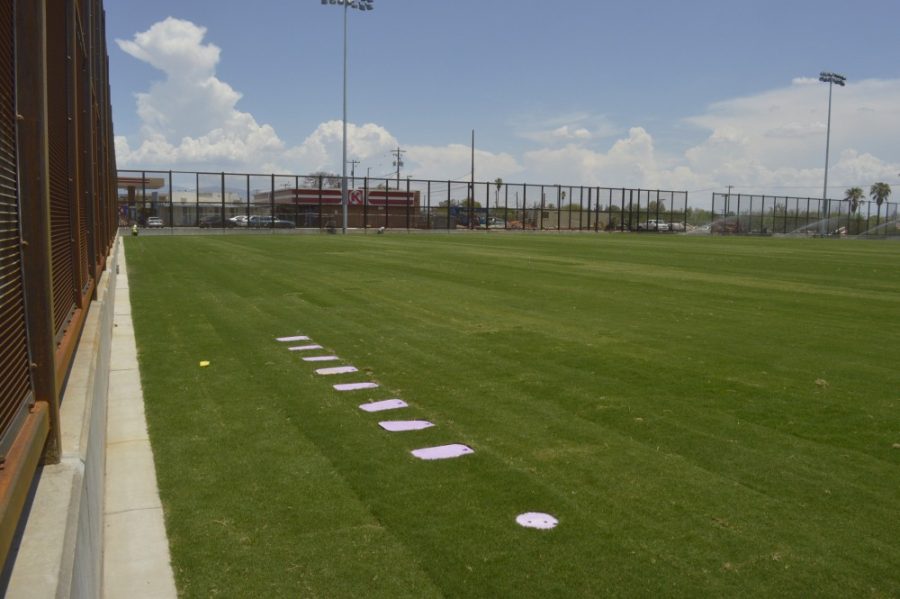Scheduled to open on Aug. 26, the UA will offer a new field on campus, providing a new home for student club sports, as well as other students.
Located next to the Student Recreation Center, Cherry Avenue Field will allow men’s and women’s club soccer, lacrosse and intramural leagues to move from off-campus locations, closer to the heart of campus. The field will also have bleachers on one side that will be able to hold up to 700 people.
“The new field is going to be a lot more convenient location wise,” said Kyle Baker, a junior and defender on the men’s club soccer team. “Everyone that I know lives fairly close to campus. I mean, I live within walking distance and a majority of the kids do, too.”
Currently, the men’s club team plays its home games off campus at Rincon Vista, a field owned by the University of Arizona and located at 15th Street between Plummer and Tucson Boulevard.
“I know that the team and I are really excited about the new field,” Baker said.
Funded by both Campus Recreation and the Athletic Department, the idea for the field originally dated back to the mid-1990s, though serious planning didn’t occur until last year, said John Lloyd, associate director for Campus Recreation. Construction began in January.
The field will cost approximately $3.5 million, according to Lloyd.
This summer, Campus Rec began collecting a $55 fee. The fee applies to all students taking classes on campus during the summer, and is projected to raise $150,000, said Jasmine Sears, vice chair for the Health and Recreation Fee Student Advisory Board in an email.
There are no plans to stop collecting the fee once the field has been paid off, she added, and the summer fee is partly being used for the new field.
The playing surface, which will be made up of natural grass, should also be able to hold up under bad weather conditions.
“The field should be able to take about 12 inches of rain and should be ready to use two hours after a heavy monsoon,” Lloyd said.
The new field isn’t restricted to just organized clubs and intramural league games, though, said Daniel Bowes, club sports coordinator.
“We’d like for everybody to have an opportunity to be on it,” Bowes said, adding that for the fall however, practice will be limited to keep the grass in good shape.
Any teams that want to use the field have to fill out a facilities use request. With the number of teams and space limited to just the one field, there could be potential problems with scheduling.
“It’s always a concern because of the limited green space out here,” Bowes said. “So I think we do the best we can and we make it work. Certainly that’s always a concern because we want to make it as fair as possible for each club.”
In addition to the new field, club teams will also be able to practice at Bear Down Field, which was restricted from use last year because of the North Endzone Project.
Field turf is also going to be installed, but Athletic Director Greg Byrne said it won’t be used by the football team.
Instead Bear Down Field will be given back to the students, he said. It’s also meant to give a “good front porch” to the new Lowell-Stevens Football Facility.
Like the men’s soccer team, the women’s club soccer team is also looking forward to the new field, said senior Lauren Dominick, the president of the club team and a midfielder/defender.
“We’ve always have had to have practices pretty much off campus at Rincon Vista,” she said.
Having the field on campus will help brand the team more to the university, Dominick said, because people will be able to drive by and see it.
This article previously stated that no student fees would be used to pay for the new field. It has been corrected to say that part of a new summer fee that applies to all students taking classes on campus during the summer, will go towards the cost of the field. The fee is projected to raise $150,000.









